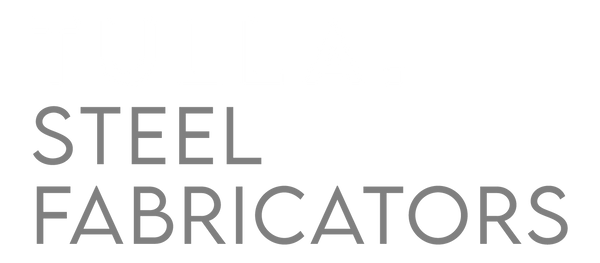A Step-by-Step Guide to the Steel Fabrication Process
Share
Steel fabrication is the process that turns raw steel into finished structures and components that serve countless industries, from transport and construction to mining, defence and manufacturing. It plays a key role in delivering strong, reliable, and durable outcomes, whether it’s for a heavy-duty workbench, a custom steel bracket, or a large infrastructure project.
The steel fabrication process covers much more than just cutting and welding. It involves a structured sequence of planning, material handling, shaping, assembling, and finishing. Understanding how it works helps clients make informed decisions and allows projects to run smoother from start to finish.
This guide breaks down the steel structure fabrication process into ten practical steps. Whether you’re new to fabrication or simply want a better understanding of what goes into your build, here’s how it all comes together.
1. Design and Engineering
Before a single cut is made, every job starts with a plan. Designs are usually developed using CAD (computer-aided design) software, which allows detailed drawings, measurements, and 3D modelling.
Structural engineers review and refine these drawings to confirm they’re safe and fit for purpose. This stage is where performance, tolerances, and compliance requirements are all locked in. Without accurate designs and specifications, nothing that follows can work as it should.
Want to know more? See our guide to the basics of steel fabrication.
2. Material Selection
Not all steel is created equal. The type of steel used depends on what the structure or component needs to withstand, from pressure and weight to moisture, chemicals, or wear. Options include carbon steel, which is common, strong, and cost-effective; stainless steel, which offers corrosion resistance and a clean finish; and alloy steels, which are modified for strength, hardness, or resistance to specific elements.
Selecting the right material early reduces issues down the line and supports longevity.
3. Cutting
Once the material is chosen, it’s cut to size using one or more of the following methods:
-
Shearing: For quick, straight cuts in sheet or plate.
-
Sawing: Ideal for tubes and solid bar.
-
Laser cutting: For clean, precise shapes, especially in lighter steel.
-
Plasma cutting: Handles thick plate and more rugged applications.
-
Flame cutting (oxy-fuel): Suited to heavy, structural-grade steel.
Each method is selected based on the job’s complexity and accuracy requirements. These are all part of broader steel fabrication techniques used in professional workshops.
4. Forming and Bending
After cutting, steel may need to be bent, rolled, or formed into shape. This part of the process allows flat pieces to become frames, cylinders, brackets, or enclosures.
Forming techniques include:
-
Bending: Carried out on press brakes.
-
Rolling: Used for curved or circular profiles.
-
Pressing: Shaping steel with hydraulic force.
-
Forging: Shaping hot steel using compressive force or hammering.
Each method adds structural form without compromising strength.
5. Machining
Machining is not used in every build, but when precise tolerances or surface finishes are required, it becomes essential.
-
Turning: Used to shape cylindrical parts.
-
Milling: Removes material for slots, faces, or custom surfaces.
-
Drilling: Adds holes for bolts, rivets, or access.
These steps usually follow cutting and forming but may come before or after welding depending on the job.
6. Welding and Joining
Welding is at the heart of the steel fabrication process, allowing pieces to be permanently joined together.
Common welding types include:
-
MIG welding: Fast and suitable for most general builds.
-
TIG welding: High-quality, clean welds used on thin or stainless steel.
-
Stick welding: Often used for outdoor or heavy-duty structural work.
-
Spot welding: Common in sheet metal and thin-gauge fabrications.
In some cases, bolting or riveting may be used instead of welding, particularly when disassembly or movement is expected. The use of welding finishing symbols on drawings helps guide the process and communicate expectations clearly.
7. Assembly
Once parts are cut, shaped, and joined, it’s time for assembly. Fixtures and jigs are often used to hold parts in the correct alignment during welding or bolting, helping to maintain accuracy and consistency.
Assembly can take place in-factory or on-site, depending on the size and final use of the structure or product.
8. Surface Finishing
Surface finishing protects the steel and gives it its final appearance. It also extends the working life of the product by shielding it from the environment.
Options include:
-
Painting: Adds colour and helps resist corrosion.
-
Powder coating: A durable, uniform finish for mobile and industrial use.
-
Galvanising: Covers steel in a layer of zinc to resist rust.
-
Blasting: Cleans and prepares the surface for coating.
The chosen finish depends on where and how the product will be used, whether appearance, protection, or both are a priority.
9. Quality Control and Inspection
Each stage of fabrication is monitored to make sure specifications are met. This includes dimensional checks, weld inspections, and surface finish quality.
At Tulla Steel Fabricators, we believe that quality control is crucial to delivering work that lasts. Every item is inspected against original drawings and tolerances before being packed or shipped.
10. Delivery and Installation
The final step involves transporting the completed structure or component to site and installing it safely.
Installation may involve lifting equipment, on-site welding, or alignment with other trades. Careful planning ensures it all fits together smoothly and without unnecessary delays.
The Value of a Structured Process
Understanding the full steel structure fabrication process helps you see what goes into a finished product, from concept to delivery. It’s a coordinated effort that combines design, engineering, and hands-on skill.
At Tulla Steel Fabricators, we work with clients from start to finish to deliver fabricated steel that performs well and lasts. Whether you're planning a custom build or need advice on your next project, our team is here to help.
Looking to start a new fabrication job? Contact us today for advice, planning support, and a clear path from drawing board to installation.
